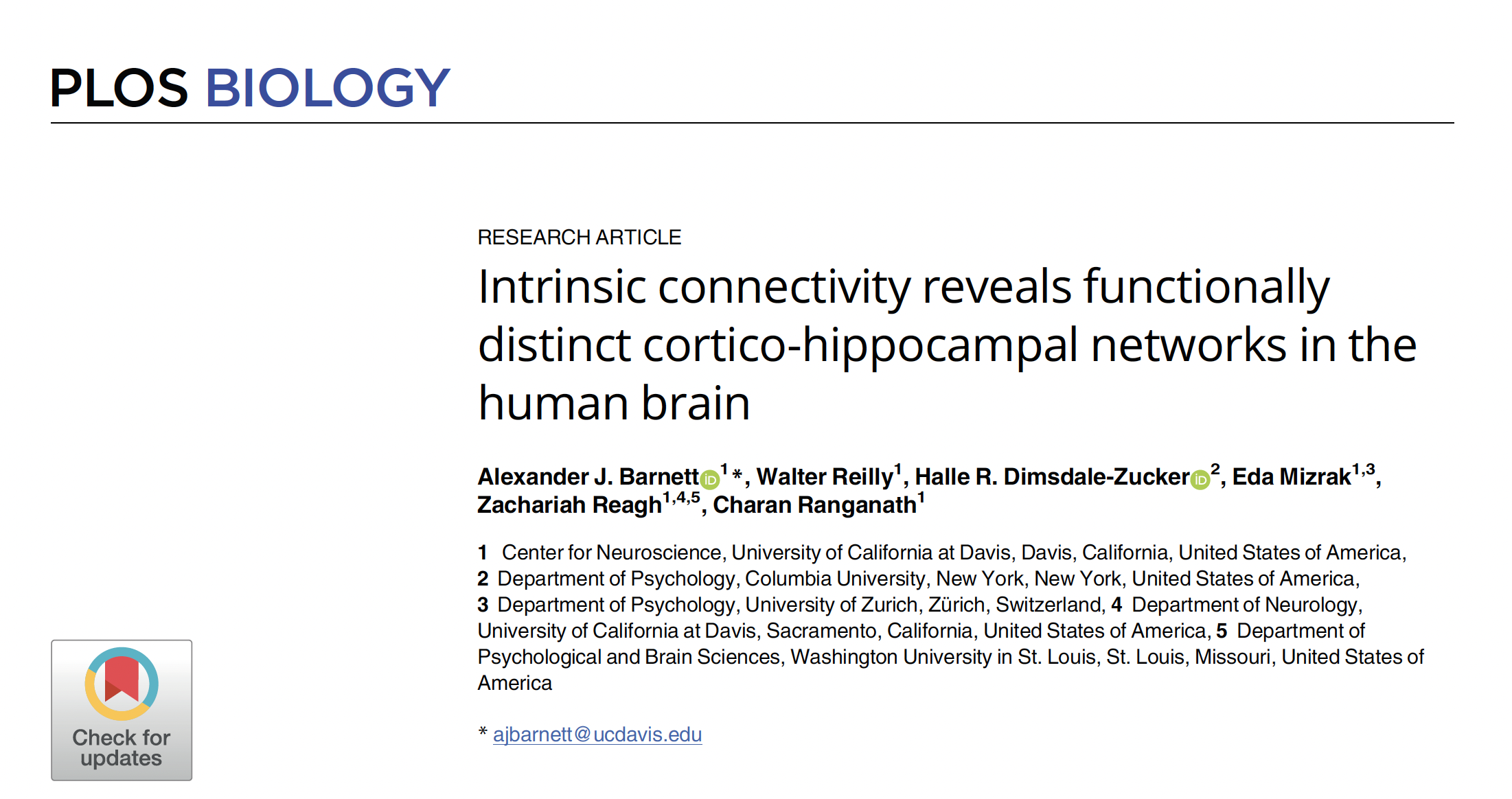
Intrinsic connectivity reveals functionally distinct cortico-hippocampal networks in the human brain
Abstract
Episodic memory depends on interactions between the hippocampus and interconnected neocortical regions. Here, using data-driven analyses of resting-state functional magnetic resonance imaging (fMRI) data, we identified the networks that interact with the hippocampus— the default mode network (DMN) and a “medial temporal network” (MTN) that included regions in the medial temporal lobe (MTL) and precuneus. We observed that the MTN plays a critical role in connecting the visual network to the DMN and hippocampus. The DMN could be further divided into 3 subnetworks: a “posterior medial” (PM) subnetwork comprised of posterior cingulate and lateral parietal cortices; an “anterior temporal” (AT) subnetwork comprised of regions in the temporopolar and dorsomedial prefrontal cortex; and a “medial prefrontal” (MP) subnetwork comprised of regions primarily in the medial prefrontal cortex (mPFC). These networks vary in their functional connectivity (FC) along the hippocampal long axis and represent different kinds of information during memory-guided decision-making. Finally, a Neurosynth meta-analysis of fMRI studies suggests new hypotheses regarding the functions of the MTN and DMN subnetworks, providing a framework to guide future research on the neural architecture of episodic memory.